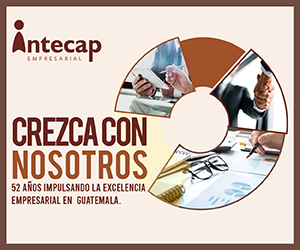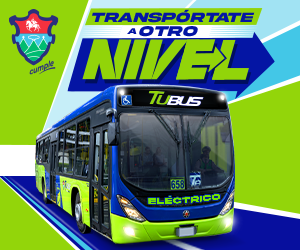The stairs reveal the scourge of time. The fragile, corroded structure that gives access to the second level of their home seems to be about to collapse. Slowly, Gladys Peña, 74, turns the knob and opens the door. “I don’t go up there because I get nostalgic,” she says.
Three years ago, Gladys saw many of her dreams fade away when on September 20, Hurricane María’s strong winds swept her home away in the community of Las Monjas in San Juan.
“This is my own sacrifice, mine, I did it by myself, without asking anyone’s help. I never took stamps, I never asked anyone for help. This was the sacrifice of my life,” she said proudly as she looked nostalgically on the second floor of the house she managed to build in 1994 and that was her home until six months ago.
Today, only walls and a fragile roof half covered by an awning remain. The space she raised by catering will be empty, but Gladys remembers every corner. She knows where the bed was, where she kept her clothes and the corner where the water leaked. “I put in like plastic so I wouldn’t get sawdust on the bed. You get creative,” she said.
Gladys is one of three participants selected to rebuild her home through the “Mi Casa Resistente” (My Resistant House) project, a partnership initiative between the Puerto Rico College of Professional Engineers (CIAPR, Spanish acronym) and the G-8 to design and build resistant and sustainable housing in Caño Martín Peña.
Gladys is one of the beneficiaries in this initial phase of this project, which includes the construction of three houses. She admits that without help by entities such as these and the Proyecto Enlace Caño Martín Peña, hope for a new home would probably be far away. Due to the vulnerable condition of the house, the G-8 rented a house for Gladys while the construction of the new home is being completed.
“This is my house, my little ranch… I feel that it is part of me, of so many years, living here, my roots are here, this is where I feel good, in this corner,” she continued.
More than 1,000 families lost their roofs and more than 100 were left homeless in the Caño after Hurricane María struck the island.
She admitted that, during these past three years, there have been moments of despair and sadness. “With my ups and downs, I have been trying to overcome all the material losses,” she said.
This feeling of helplessness and frustration that Gladys experienced over the last three years is probably what the more than 20,000 families who still lack a safe home also feel.
Currently, according to an assessment by the Housing Department, some 4,500 families are still living in a house with a blue tarp. The number of people without insurance, however, would reach 20,000.
According to data provided by Housing Secretary Luis Fernández Trinchet, the Repair, Reconstruction, or Relocation (R3) program – created to help families whose homes were impacted by Hurricane María – received 26,997 applications. The program had to be closed, and Fernández Trinchet told this newspaper that they would be helping about 10,000 families with the funds available.
They have received the necessary documentation for evaluation in 15,000 cases, and there are some 3,000 applications that were referred to the title assistance program due to the lack of evidence confirming the identity of the owner, another major obstacle that many families have faced in their recovery process.
103 homes were built under the R3 program. Meanwhile, 367 are in the preconstruction phase and 421 are under construction.
A long wait
María Guzmán submitted a request to R3 for the reconstruction of her home a year ago. She is still waiting for an answer.
“I couldn´t rebuild this part yet. This room collapsed completely. I haven’t fixed it because they (R3 representatives) came, but I don’t know what they are going to do with me. They already have my case and they have the documents,” she commented as she showed her home.
Guzmán has been living in the community of Villa Esperanza, in Toa Alta, for eight years. She arrived thanks to her daughter who also lives in the community. Like so many other thousands of Puerto Ricans, she does not have a title deed.
The more than 100 families who live in the rural area have settled there without the necessary permits or property titles since 2010. However, three years ago they entered into a five-year lease agreement with the Land Authority of Puerto Rico.
Last year, the Legislative Assembly approved a resolution defining the processes to follow to grant property titles to families.
“They (R3 staff) came because they do some soil testing, but I’m calling them because they came twice and nothing. Mice, all kinds of pests, get in and it’s not easy,” she said.
She also told El Nuevo Día that she has no other place to go. Currently, she is unemployed. She got a job in January, but after the COVID-19 pandemic was declared she was laid off. Her husband does odd jobs to get some money.
“Here I am waiting for them… it’s been tough. I fear that a hurricane comes and sweeps the house away,” she said.
Very little has changed
El Nuevo Día interviewed María Quiñones in May 2019. Her bed was two mattresses right in the middle of the living room, the only place in the house where water did not leak.
“The roof is the same. My son tried to put some panels as he could and some zinc plates because he is doing some work down there and comes here exhausted, alone, bringing panels,” said the woman.
This time, María spoke from the balcony of her house in the Caño Martín Peña. She would like help repairing the roof, but because the house is rented and “they still can’t find the owner’s whereabouts,” help does not come easily.
A few days ago, a man arrived saying he had been left in charge of the house, she told this newspaper. “This house has no water, the pipe is always blocked, he wants to charge us two hundred and something, and he doesn’t have the right to fix us the rent,” she said.
Another neighbor lives in the lower part of the house and the leaks have damaged her belongings. There is no drinking water service. “Upstairs you have to urinate in a separate bucket and pour water and chlorine in,” she said.
In the afternoon, she added, she looks for water in a shopping cart she has right in front of the house. “I bring two or three pots, a boy helps me carry them up, you have to give him three pesos, you know…nothing is free,” she said.
Desperate
There is very little left of the awning that was originally placed on Luz Santiago’s home in the Caño Martín Peña, then, water leaks and damages her belongings.
In a first claim, the Tu Hogar Renace (Your Home Reborn) program made some repairs that were left unfinished. One of the two rooms remains empty due to the leaking problems. “I have a rash often and it’s due to these leaks and moths on the ceiling,” she said.
“This is where I sleep, I had to move because that panel stinks and I suffer from chronic asthma,” she added, pointing to the bed in the small room.
Due to the damage to her home, the Federal Emergency Management Agency (FEMA) gave her a grant to build the kitchen walls in concrete. “Since they didn’t give me the money, the same old, broken zinc panel was left there, I had to put the same (zinc) on it,” she said, after pointing out that she has felt “nervous, anxious and sad” over the past three years.
Source: El Nuevo Día






































